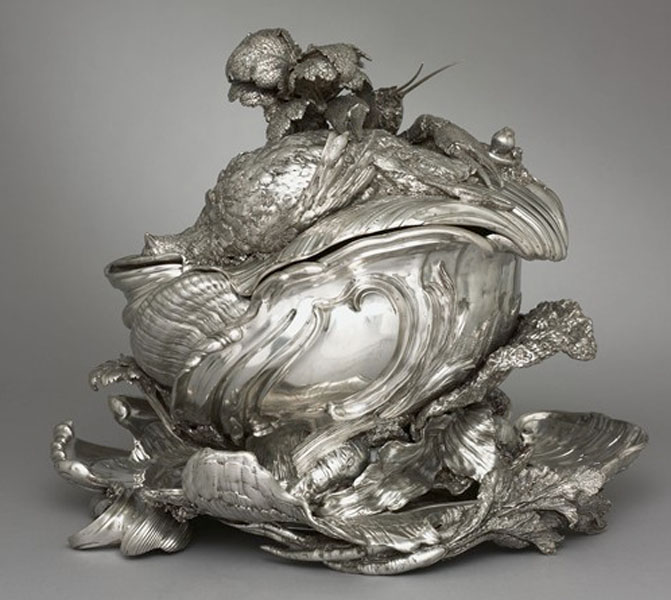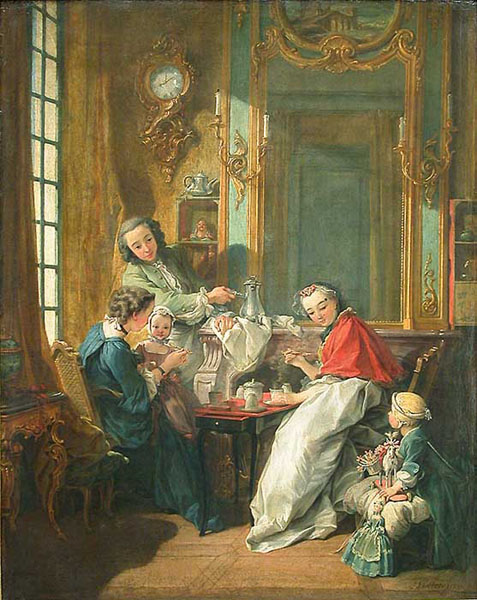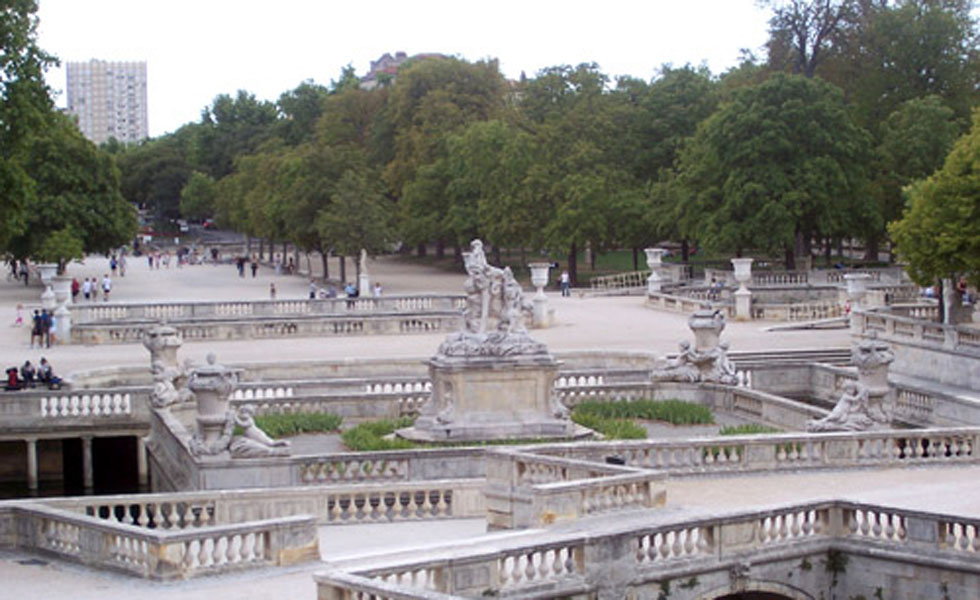Louis XV style
Download PDFThe Louis XV style evolved from the Regence style but focused more on the movement of freedom in shapes. Wealthy mansions were designed with convenience in mind and were already around during the Regence style, whilst during the Louis XV style private apartments became a lot smaller.
Breaking away from the antique or classic styles, this period invented an ornamental repertoire that was completely innovative and original, the Rococo style. It was based on very curved and sinuous lines, asymmetry being the guiding principle of this period. In interior decoration, colour, mirrors, large white ceilings decorated with a central rosette were popularly used. The painter François Boucher became the symbol of this new style, where gallantry prevailed over grandiose.
From 1730 to 1735 Rococo or «rocaille» style flourished in the Parisian interiors and was abandoned as early as 1745-1750. The Rococo style is known for its systematic use of curves, excess use of ornaments and above all asymmetry which went as far as distorting natural elements.
Voltaire and his followers condemned the rococo style and criticised its ridiculous excessive use of shells, dragons and palm trees. From 1740-1745 the rococo style moved towards symmetry, the overall shapes and the ornaments stayed the same but they were arranged symmetrically, the decor being overshadowed. Rollers on feet, central labels, garlands of flowers, asymmetric shells, rocaille features and water flowers were henceforth employed.
The beginning of the Neo-Classic style appeared from as early on as the 1750s, with the travels of Marquis de Marigny, Soufflot and Cochin in Italy (1748-1750), the evacuation of Pompei (1748) and the famous Supplique aux Orfèvres by Cochin in 1754 which denounced the excessive use of the Rococo style (1754). A new style thus appeared that was an intermediary between the rococo and the Antique Clasicism style, from which appeared neoclassic ornaments, such as ribbons, floral vases, and festoons, arranged in a strong symmetrical way.
You can see all the objects of the Louis XV style by Galerie Marc Maison by following this link.












































